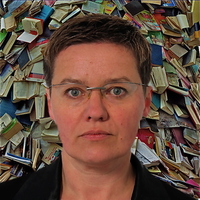Course title:
Mental grammar
Course code: PSL234
Course status: Elective
Course leader: Anita Peti-Stantić
Course instructor:
Language of instruction: English
Total hours: 8S
Form of instruction: Seminar
ECTS credits: 4
Course content by topics:
- The concept of mental grammar and its psycholinguistic reality; 2. Consideration of the principles of combinatory possibilities and determination of the rules of grammaticality, a distinction between the rules of grammar and semantic verification by native speakers; 3. Introduction to various theoretical approaches to the analysis of the information structure of a sentence; 4. Elements of the information structure of a sentence; 5. Introduction to contemporary experimental approaches to linguistic data; 6. Application of the methods used to establish elements of the information structure of a sentence (on the examples from the Croatian language); 7. Establishment of the interface of phonological, morphosyntactic and semantic elements in the formation of the information structure of a sentence in Croatian (on the basis of experimental examples)
Learning outcomes at course level:
- To explain and critically evaluate various approaches to mental grammar and the information structure of a sentence; 2. To apply contemporary experimental psycholinguistic methods to a research problem related to the information structure of a sentence; 3. To evaluate the degree of grammaticality of sentence structures; 4. To integrate the knowledge acquired in the semantics and morphosyntax courses in order to be able to provide a comprehensive description of the sentence structure; 5. To participate in the discussions on contemporary psycholinguistic approaches to language relying on informed insights and well-grounded arguments.
Learning outcomes at programme level:
| IU1 | IU2 | IU3 | IU4 | IU5 | IU6 | IU7 | IU8 |
| x | X | x | x |
Reading list:
- Féry, Caroline i Ishihara Shinichiro (ed.) (2016) The Oxford Handbook of Information Structure. Oxford University Press. (selected chapters); 2. Jackendoff, Ray (2002, 2009) Foundations of Language: Brain, Meaning, Grammar, Evolution. Oxford University Press. (selected chapters); 3. Lambrecht, Knud (1994) Information Structure and Sentence form. Topic, focus, and the mental representations of discourse referents. Cambridge University Press.; 4.
Selkirk, Elisabeth (2001) “The syntax-phonology interface.” International Encyclopedia of the Social and Behavioral Sciences, eds. N.J. Smelser and Paul B. Baltes, 15407-15412. Oxford: Pergamon.; 5. Wedgwood, Daniel (2005) Shifting the Focus: From static structures to the dynamics of interpretation. Elsevier.; Additional: 1. Arnold, Jennifer E. “Marking salience: The similarity of topic and focus” (unpublished article); 2. Butler, Christopher S. (2005) “Focusing on focus: A comparison of Functional Grammar, Role and Reference Grammar and Systemic Functional Grammar.” Language Sciences 27 (2005) 585-618.; 3. Pereltsvaig, Asya (2004) “Topic and Focus as Linear Notions: Evidence from Italian and Russian.” Lingua 114 (2004). 324-344.
Assessment of student achievement: Course attendance. A psycholinguistics research and a paper on the basis of the conducted research (minimal length:16 pages).
Quality assurance mechanism: student survey

